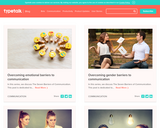
This website contains several articles about seven different barriers to effective communication and how to overcome them.
- Subject:
- Career and Technical Education
- Material Type:
- Reading
- Author:
- Brandi Gratis
- Date Added:
- 06/05/2018

This website contains several articles about seven different barriers to effective communication and how to overcome them.
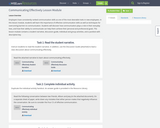
Employers have consistently ranked communication skills as one of the most desirable traits in new employees. In this lesson module, students will learn the importance of effective communication skills as well as techniques for overcoming barriers to communication. Students will discover how communication plays a role in their everyday lives, and how their ability to communicate can help them achieve their personal and professional goals. The lesson module contains a student narrative, discussion guide, individual and group activities, and a posttest with descriptive key.

Students will learn about careers and entrepreneurial businesses that exist within their own community by taking pictures and interviewing people working. This is a great way of creating career awareness or encouraging a more in-depth study of entrepreneurial careers. This can be used as a way for students to hone communication skills; become more familiar with different kinds of jobs, and expose them to a wealth of career possibilities. This activity can also be used to foster business/community partnerships. It can be used as a formative activity to prompt student motivation and interest, or as a summative assessment through which content is assessed for the inclusion of the targeted learning objectives.
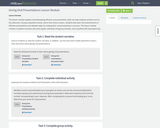
This lesson module explains how developing effective oral presentation skills can help students achieve more in the classroom, during competitive events, and in their future careers. Students also learn the characteristics of effective presentations and detailed steps for making their oral presentations a success. The lesson module contains a student narrative, discussion guide, individual and group activities, and a posttest with descriptive key.
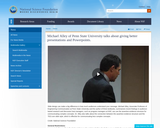
Slide design can make a big difference in how much audiences understand your message. Michael Alley, Associate Professor of Engineering Communication at Penn State University and the author of three textbooks, summarizes recent findings in audience-based research and discusses how managers, such as program managers at NSF, can use the assertion-evidence structure for communicating complex concepts. Dr. Alley also talks about the connection between the assertion-evidence structure and the TED.com slide style, which is effective for communicating less complex concepts.
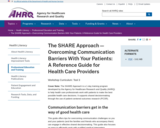
This website by the Agency for Healthcare Research and Quality clearly explains the common communication barriers in a medical setting, along with techniques to overcome them. Language, hearing, and visual barriers can be overcome by visuals, video aids, written instructions, and medical interpreters. The website provides directions on how to facilitate conversation between the patient, medical professional, and translator. As an interactive activity, students should role-play how they would introduce each communication technique to a patient when there is a communication barrier. By reading and role-playing, students should feel confident communicating with patients through the use of communication aids.
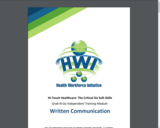
This independent training module by the Health Workforce Initiative teaches written communication for producing professional quality healthcare documents. After explaining the importance of written communication in healthcare, the module provides two main activities. I would recommend just the first activity as that aligns with the standard, and the second one does not. For the first activity, students will receive a “Discharge Instructions” document, and the students will rewrite this document using professional words that a patient without a healthcare background would understand. The goals of this activity are for students to practice professional writing for healthcare documents, identify terminology they should use to communicate with patients in healthcare documents, and practice some English Language Arts skills.